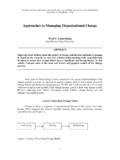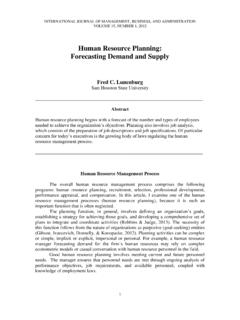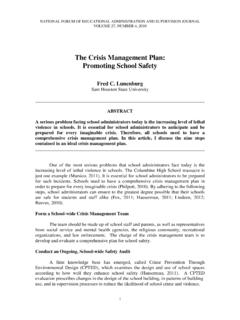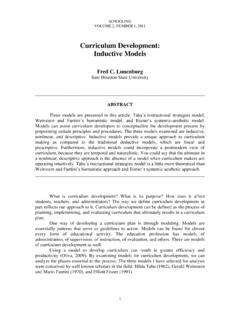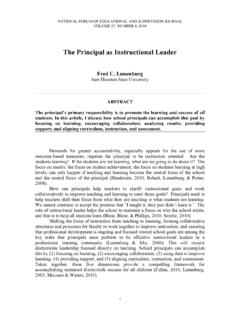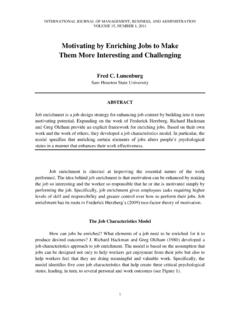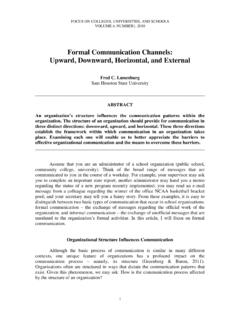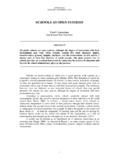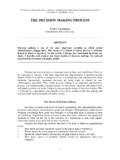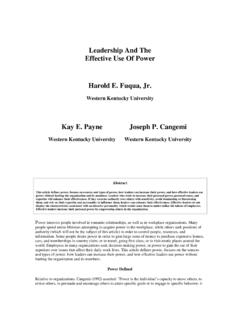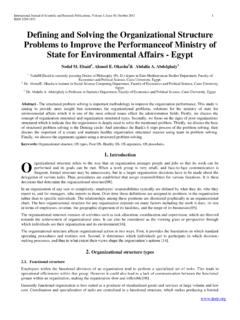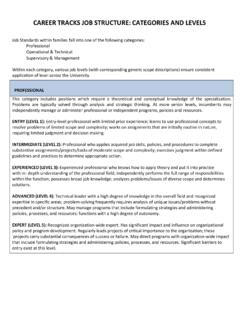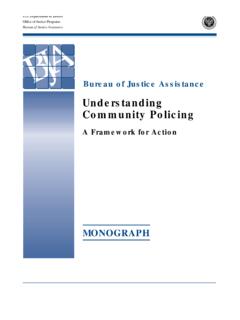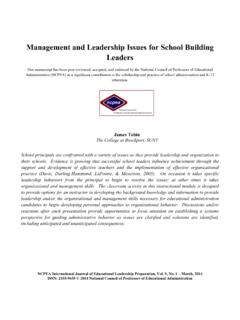Transcription of Organizational Development: Implementing Planned Change
1 INTERNATIONAL JOURNAL OF MANAGEMENT, BUSINESS, AND ADMINISTRATION VOLUME 13, NUMBER 1, 2010 1 Organizational Development: Implementing Planned Change Fred C. Lunenburg Sam Houston State University _____ ABSTRACT Organizational development is a set of behavioral science techniques designed to plan and implement Change in work settings. The major techniques of Organizational development attempt to produce some kind of Change in individual employees, work groups, and/or the entire organization.
2 These Change techniques can be divided into two categories: process and structural. In this article, I discuss four process Change techniques and four structural Change techniques. _____ Organizational development (OD) is a set of Planned - Change techniques or interventions designed to improve Organizational effectiveness and employee well-being (Balzac, 2011). This definition implies the following characteristics. First, OD is a systematic approach to Planned Change . Second, OD involves the application of behavioral science theory and research to Organizational functioning.
3 Third, OD values human and Organizational growth. Finally, OD seeks to improve both individual and Organizational well-being and effectiveness. Process-Focused Techniques The emphasis of process Change techniques is on the process to accomplish Change . Many of these techniques focus on improving individual and group processes in decision making, problem identification and problem solving , communication, working relationships, and the like. Intervention methods in this category include survey feedback, team building, process consultation, and quality-of-work-life (QWL).
4 INTERNATIONAL JOURNAL OF MANAGEMENT, BUSINESS, AND ADMINISTRATION 2_____ Survey Feedback Three basic steps are employed in survey feedback (Conlon & Short, 1984). First, a questionnaire is typically completed by all members of a work group or whole organization. It asks organization members for their perceptions and attitudes on a broad range of topics such as decision-making practices, communication effectiveness, coordination between units, job satisfaction, and the like. The leader of a work group or total organization receives a summary of the tabulated results from the survey.
5 In some cases, a consultant (an internal or external Change agent) meets with the leader to discuss the results. In the second step, data are fed back to the organization members, usually during group meetings. The OD consultant, internal or external, often attends the meeting to explain any technical aspects of the data. Finally, in the third step, specific plans for dealing with the problems identified by the survey are developed. Again, this usually takes place in group sessions where open discussion is encouraged.
6 Survey feedback functions both as a Change strategy and as a diagnostic process. Because of its value in Organizational diagnosis, survey feedback is frequently used as part of large-scale, long-term Change programs in conjunction with other strategies and techniques. It can be used to improve groups and teams, inter-group relations, and system-wide activities. The survey feedback technique is powerful because it provides organization members at all levels of the firm on results for their units and engages them in constructive discussions with their manager for making improvements.
7 Team Building Organizations of all kinds are made up of people working together to achieve some common goal. Because people are frequently required to work in groups, considerable attention has been focused on team building in recent years (Dyer, 2008). Improving the team means better performance by the individuals and the group. Team building is a process of diagnosing and improving the effectiveness of group members with particular attention to performance and collaboration within the group, especially the role of the leader in relation to other group members (Cavanagh, 2011).
8 Team-building strategies are typically directed toward goal setting, development of interpersonal relations, role analysis, and team process analysis (Kayser, 2012). Team building may begin by having organization members define the goals of the work group or firm. Different perceptions of what the organization's purpose is may surface. Following this, group members can evaluate the organization's performance how effectively they are achieving their goals. This may identify potential problem areas. Next, each team member's role can be identified and clarified.
9 Previous ambiguities may be brought to the surface. And, finally, key processes that go on within the team are analyzed to identify how these processes might be improved, resulting in greater team effectiveness. This latter activity is similar to process consultation. FRED C. LUNENBURG _____3 Process Consultation A variation of the team building technique is process consultation. In process consultation, often an outside consultant helps the manager perceive, understand, and act on process events that occur in his or her work environment (Schein, 1999).
10 These might include work flow, informal relationships among organization members, and formal communication channels. The consultant gives the manager insight into what is going on around him, within him, and between him and other people. The consultant is not there to solve the manager's problems. Instead, the consultant provides guidance to help the manager diagnose what processes need to be improved. Process consultation usually addresses one or more of the following areas of concern: communication, leadership, decision making and problem solving , group norms and roles, and conflict resolution.
